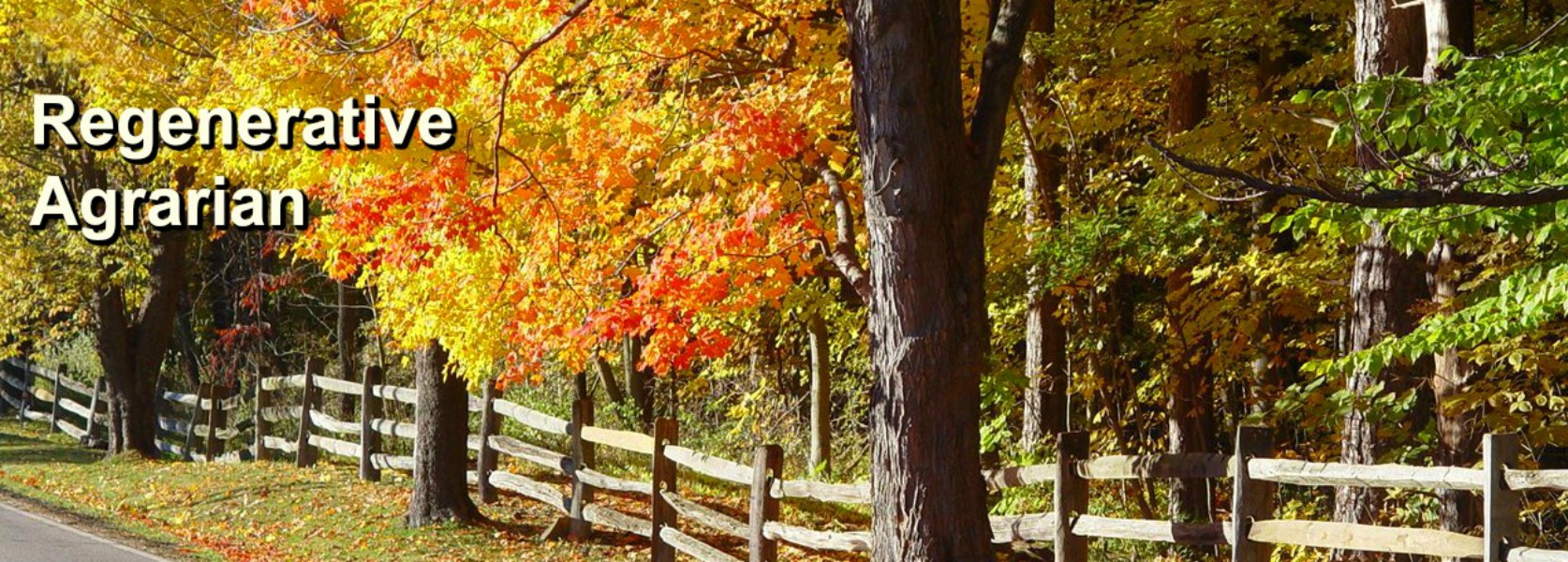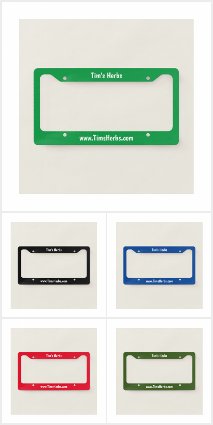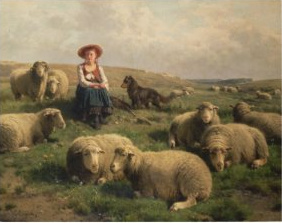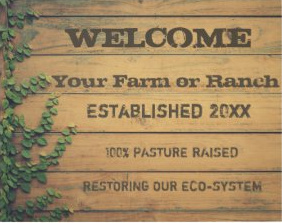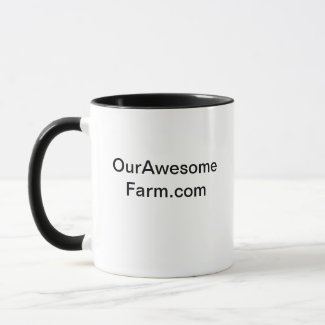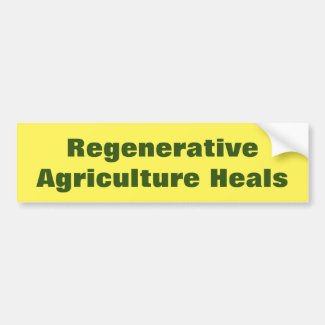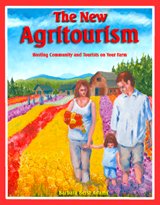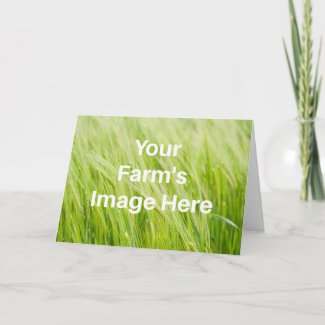Earth restorative fiber production: From plant fibers to humane wool
First published by Barbara Berst Adams in AcresUSA © National Lilac Publishing, LLC
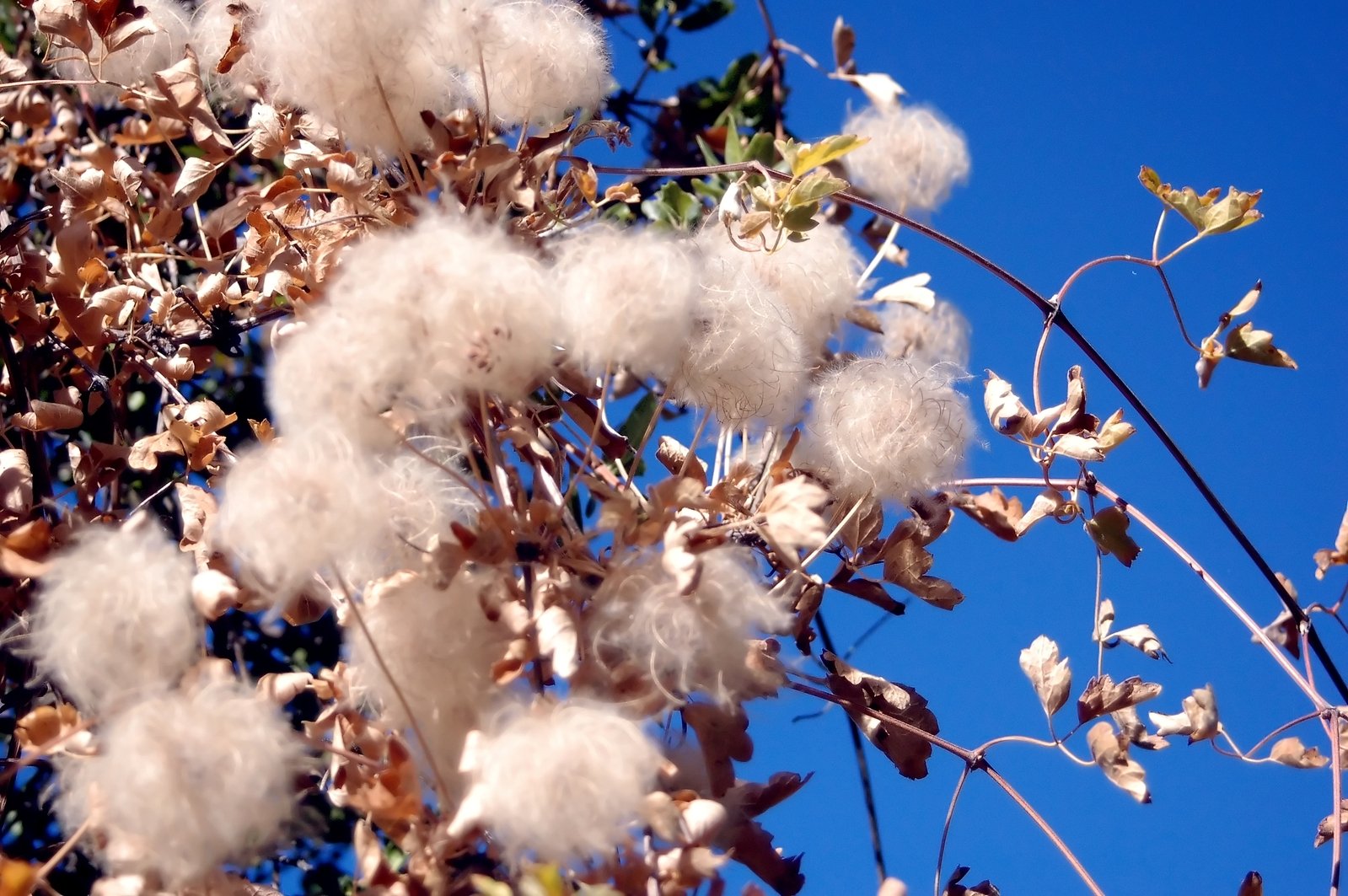
It was sheep shearing day on my grandpa’s ranch in the mid-20th
century, and all I knew was that I was having fun. Everyone, including
Grandpa, was clad in blue denim jeans on this sunny day. Gathered with
other neighboring small-scale ranch owners, we sheared, then stuffed and
stomped wool into the gigantic bag that would be taken to market.
Though considered old-fashioned and outdated amidst the growing “get big
or get out” phase, small farmers in our area still gathered on shared
missions like this.
And there was no reason at the time for a little kid like me to realize what we were doing -- raising textile fiber in an earth-regenerative manner -- would become a world mission to support the health of the planet. Holistic by default, Grandpa’s sheep were rotationally pasture grazed, the ranch was diversified, and he planted by the moon’s cycles. That’s the only way he’d ever farmed. Yet that type of farming didn’t appear out of an inability to know better. It evolved from a powerful ability to sense what is needed to thrive.
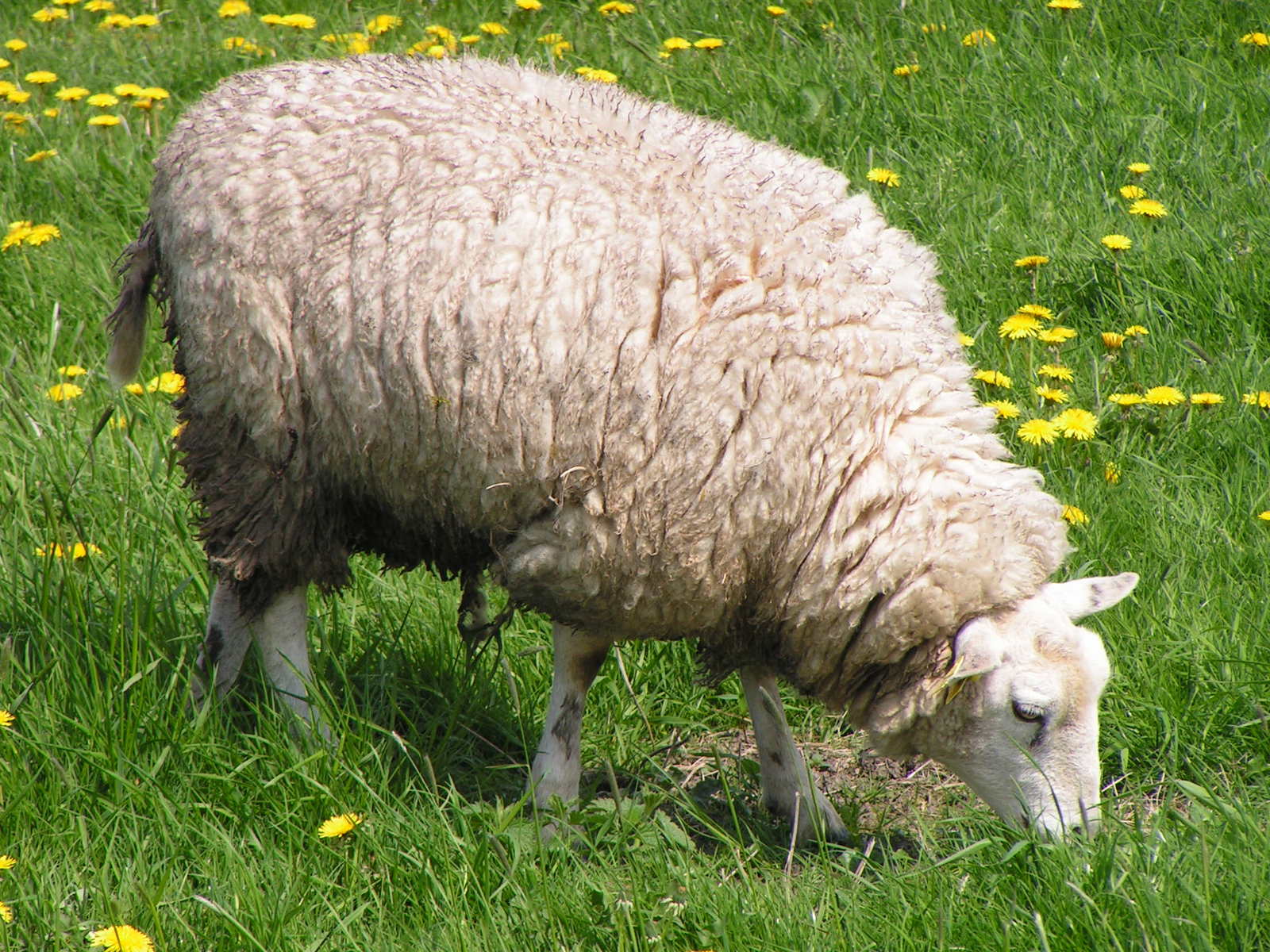
Fast forward to being a grandparent myself, and climate change adds a sense of urgency for not just our food and fuel to be earth restorative, but also our clothing and textiles. The after-harvest processing of the fiber must be considered when improving the ecological impact of the textile industry, but eco-farmers serve the initial production of the fibers themselves, and it must happen in a way that also sustains them financially.
So whether farmers produce earth sustaining wool from sheep as my grandfather did, produce it from other animals such as angora rabbits, or grow plant fiber staples such as flax, hemp, cotton, leather, nettle, or even dye crops, there needs to be high enough demand for the farmers to supply.
On some fronts, it appears demand for USA farmers to produce more sustainable fiber may be rising. Holy Lamb Organics near Olympia, Washington, produces handmade bedding products from organic or ecologically grown fibers including wool and cotton. Their standards for supporting USA farmers who regenerate the earth with humane treatment of animals is high. And while their wool is already sourced mainly from USA farmers, they’d like that to eventually also be the case for their organic cotton, which is currently sourced from other countries.
Tj O'Shae, marketing/social media team member of Holy Lamb Organics, recently confirmed with me that though at the company’s inception there were few USA farmers and mills producing the long stapled organic cotton fibers they need, they see this trend reversing. They plan to use USA cotton when there are enough secure and reliable suppliers. And consumer interest in their organic fiber products has also grown from more than 80 stores across the USA and Canada that carried their product a while back to even more today. “At this time,” he said, “we have 140+ partner companies who carry Holy Lamb Organics products.”
A US non-profit, a project of the Organic Consumers Association called Regeneration International, is also keeping an eye on the fiber industry. It promotes a campaign to increase the global market for ecologically produced fiber. The organization’s overall vision is stated as, “a healthy global ecosystem in which regenerative agriculture and land-use practices cool the planet, feed the world, and promote public health, prosperity, and peace.” And along with feed the world, they can now add clothe the world, as well. They promote the Care What You Wear project which they describe as follows: “The Care What You Wear” campaign’s aim is to educate consumers about why and how to buy clothes that support organic and regenerative farming, responsible production and fair labor practices, and to expose today’s fast-fashion industry which perpetuates ethically and environmentally unsound practices with its “buy more, cheaper clothes” message. We can’t fix the global clothing industry’s complicated and “dirty” supply chain overnight. But by putting pressure on the worst offenders, and by supporting the brands that take steps to clean up their supply chain, together, we can move the dial in the right direction.”
Regeneration International networks and connects with more than four million farmers, consumers, activists, scientists and policymakers in more than a hundred countries. It’s also engaged in both hands-on and online farmer training. One of the pdf’s they link to is the full report from the Journal of Soil and Water Conservation, entitled “The role of ruminants in reducing agriculture’s carbon footprint in North America.” For fiber producers raising ruminants such as sheep and angora goats, this 9-page document can help alleviate concern regarding ruminants and methane, and can be used as educational material to share with an eco-rancher’s customers. The document discusses and compares various methods of raising ruminants. As quoted from this report, “Owing to the methane (CH4) produced by rumen fermentation, ruminants are a source of greenhouse gas (GHG) and are perceived as a problem. We propose that with appropriate regenerative crop and grazing management, ruminants not only reduce overall GHG emissions, but also facilitate provision of essential ecosystem services, increase soil carbon sequestration, and reduce environmental damage.”
This organization also helps generate more sustainable fiber demand from consumers by supporting the clothing brands that sell products made from ethical and holistic farms and ranches. They do this is by operating a directory of responsible fashion brands in North America and Europe for consumers to purchase from.
Fiber farmers or eco-fiber agriculture organizations may want to become familiar with Regeneration International’s online and live resources to help keep up on the local and global direction of ecological fiber production and its markets. Some may even want to see if linking up with them directly may be of value, as it has been for “Fibershed.” It’s a California-based regenerative fiber community that supports their own regional fiber and dye farmers along with assistance to fiber and dye producers worldwide.
Fibershed - Regionally and regeneratively produced clothing
Fibershed, a non-profit founded by Rebecca Burgess of California, offers research and hands-on education on carbon farming and biosphere regeneration within the fiber industry, along with networking and marketing support for its members. Its own active regional Northern California Fibershed serves as an example to other regions in the USA and around the world, as Fibershed aims towards the development of an international system of regional textile communities.
Fibershed started several years ago with Burgess’s own initial personal project of wearing a wardrobe sourced no more than a 150 mile radius from her location. The non-profit blossomed from this initial experiment, and among various projects, it now operates the Northern California Producer Program that offers membership to those involved in fiber production within a 150 mile radius of its San Geronimo, California headquarters. At this time, there are some components to the fiber production chain not available in this region. Fibershed handles that by verifying any inputs or textile services coming from outside its borders until those inputs and services are available within the region. Currently, these are listed as a milling facility for cotton and fine gauge wool, as well as most sewing notions (thread, etc.).
Fibershed members include farmers, ranchers, designers, sewers, weavers, knitters, felters, spinners, mill owners and natural dyers, which are listed in Fibershed’s Producer Directory. Those who grow fiber and dye crops receive free soil carbon baseline testing and support on improving the carbon farming methods on their land.
Fibershed developed The Citizen Science Soil Sampling Protocol in collaboration with UC Davis’s Gaudin Lab. It’s a soil assessment method that shows growers what their soil carbon baseline figure is which is valuable to have before implementing a further carbon farming plan. Fibershed then supports farmers further with how-tos for ecological farming in their region.
WoolFulLove Farm and Fibers of Covelo, California, is one of the Fibershed member producers. The diversified crop farm includes Merino and Longwool breeds of rotationally grazed sheep that produce a wide assortment of naturally colored wool. Owner Jami Johnson shared with me that as a farmer, Fibershed’s conferences and articles have helped her understand climate beneficial farming practices and have helped guide her farming and producing choices and how she interacts with her customers. “I have continually been inspired to use more and more natural dyes with my fibers,” she said, “and to use dyes that are native to my environment. I also now am a strong supporter of the slow textile movement. I am an advocate to all of my customers to think about where their clothes come from.”
Fibershed members are also offered a photoshoot and write-up of their operation on the Fibershed website, as is the case with WoolFulLove and others, including the story they present of Stemple Creek Ranch. This ranch produces grass-fed beef and lamb in Marin County, California. Author Sasha Wirth skillfully describes in this story how up until a few years ago, wool from Stemple Creek Ranch’s sheep was only a byproduct that barely paid for the shearing costs. Wirth goes on to explain that the ranch operators then saw an opportunity in the growing consumer interest in local fiber that helps regenerate the planet. Stemple Creek Ranch became one of the first producers of Climate Beneficial Wool -- another project promoted by Fibershed. This allows the ranch to sell heirloom quality wool for fiber artists who know the wool's production helps capture more carbon than it produces.
Among numerous carbon farming methods, Stemple Creek Ranch uses rotational grazing, and spreads organic compost over some of their pastureland according to carbon farming standards. Via the Marin Carbon Project of which Stemple Creek has partnered with, northern California carbon farming ranches have been studied to make certain compost spread on pastures does not add methane and nitrous oxides to the air, but instead improves underground carbon storage, water retention, drought resistance, and forage growth.
Involvement and exposure with Fibershed can also help promote a farm or ranch’s products, as it has for WoolFulLove Farm and Fibers. “I have received quite a few emails now from people interested in wool products or to purchase sheep,” Johnson said, and stated that Fibershed generates customers that come to the Berkeley Farmers Market, looking for her yarn.
Members can also receive up to 100 free Fibershed Certified Product tags, discounts on workshops, and several other perks.
Agricultural growers and producers in the central/northern California area who are interested in becoming part of this network can contact Fibershed for further information, and if they choose, can fill out the online form and pay a $40 (at this writing) per year membership fee.
For farmers and ranchers living beyond this region who might want to join or start their own regional fibershed, Fibershed offers an Affiliate Program membership which currently lists Fibershed communities across the USA, Canada, and several other countries. Members can learn from online webinars, network with other members who share the same vision of strengthening their regional fiber systems, become licensed to use the Fibershed logo, and learn from others’ successes and challenges. Some of the projects within the current Fibershed affiliate membership include the Northern Minnesota Fibershed which raised funds to bring fiber processing equipment and skills to their fiber region. Others have organized agritourism educational field trips to farms in their region and have organized local fiber marketing projects such as producing films, offering dyeing and fiber arts classes, and even putting on fashion shows highlighting locally produced clothing, as did the Upper Canada Fibershed.
Farmers and ranchers interested in the affiliate program can find a directory of regional fibersheds at the Fibershed.com website, and can begin the process of joining online if they choose.
Fibershed’s Grow Your Own Blue Jeans Project -- including locally grown indigo
Locally and sustainably produced sweaters and socks are a remarkable achievement that will hopefully expand across the country, adding to our choices of regenerative clothing. But blue jeans, a wardrobe staple that transcends gender and generations, carries its own unique challenges from its soft but rugged denim and virtually un-rippable seams to its signature blue color (once coming from plant based indigo, and now mostly from chemical dyes). It can seem far-reaching to produce them sustainably, yet alone nearby. But in the fall of 2015, a Grow Your Own Jeans (GYJ) fashion show and fundraiser was held to celebrate the success of an unusual Northern California Fibershed pilot project.
A limited edition of blue jeans was produced from organic California cotton grown on soil that is rotationally grazed by sheep. It was dyed with regionally grown Japanese indigo, which grows well in California’s temperate climate. The cotton was woven and sewn in the San Francisco bay area using notions made in the USA. “It was a wonderful project,” said Marie Hoff, Fibershed Producer Program coordinator, “and has inspired many other new projects, including the development of indigo extracts to commercial scale as well as building weaving capacity and developing our latest project, Climate Beneficial cloth. Essentially the GYJ project was a one time project to experiment and showcase, however we'd be delighted to see someone take that research, prototyping, and market demand and build it into a jeans company. As a nonprofit organization, we do not have this capacity. We can offer support in the form of research and development, public education, making connections with stakeholders, etc.”
Much more sustainable fiber and dye farming research and consumer awareness continues to happen among these and other organizations and independent farmers and ranchers. Far more, of course, is needed. But projects such as Grow Your Jeans initiate further study and practical education on regionally and regeneratively produced fiber and dye. Organizations such as Regeneration International and Fibershed link up farmers and ranchers with potential nearby production partners and customers that may not have known of each other. They help generate consumer awareness and demand, which fiber and dye farmers need to sustain their land-based businesses. Like the above mentioned Care What You Wear campaign and Climate Beneficial Wool, even the variety of catchy names the various sustainable fiber system projects are christened add to the efforts to attract consumer awareness. The list also includes “Sheep to Sweater,” “Ranch to Runway,” “Community Supported Cloth,” “Soil to Skin,” “Farm to Garment,” and even “Soil to Soil clothing,” where clothing that has outlived its use is traceably eco-restorative enough to be composted back into organic soil.
My Grandpa certainly would have believed in Soil to Soil clothing. (He tossed his spent blue jeans in the garden to smother weeds after Grandma removed buttons, zippers and any quilt-worthy pieces of denim for reuse.) But he had no idea so many people in the world would some day worry about a deteriorating environment, nor that they’d forget the joys of shared community agricultural events like our shearing day.
Yet the bits of old denim remnants my grandma sewed into brand new quilts remind me of the bits of Grandpa’s farming methods being recycled and expanded upon today. Farmers such as Jami Johnson of WoolFulLove Farm and Fibers, and organizations like Regeneration International and Fibershed, gather again in shared mission with that powerful ability to sense what is needed to thrive. Whether it’s global fashion brands or local blue jeans, current and aspiring eco-fiber and dye farmers have a growing network of organizations supporting their markets and education as we march towards a more beneficial fiber and textile industry.

